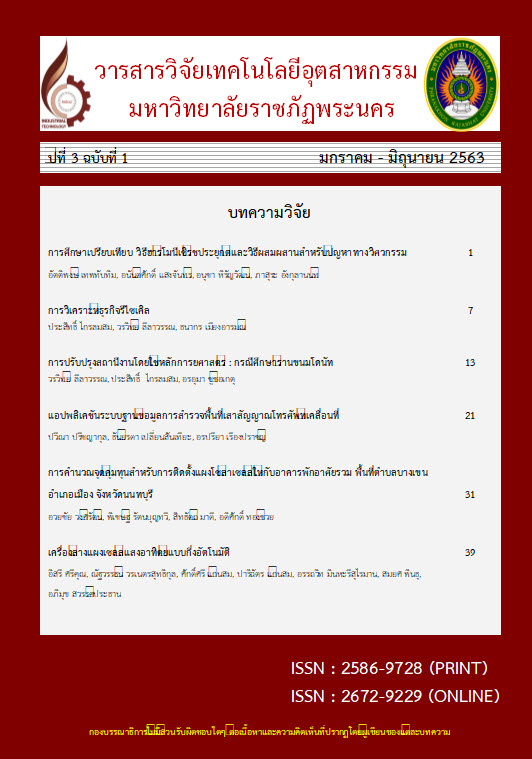The Development Workstation by Ergonomic A Case Study at Donut Shop
Keywords:
Workstation, Ergonomic, Abnormal Index (AI), Rapid Upper Limp Assessment (RULA)Abstract
This research aimed to study the way to develop workstation in doughnut processing line by using ergonomic principle. AI analysis and RULA technique were used to evaluate work action of staffs in each workstation. From the survey and data collection, it was found that the problem sources were staffs carried a very heavy product. By using the basic evaluation, AI analysis was 3.83 and the RULA was 7. After workstation modification to suit working conditions using take a table in workstation for 8 weeks, the analytical data showed better results after the modification.
It was found that the AI calculation was reduced to 1.99 and the RULA was at 3. The sources of problems were from staffs carried a very heavy product. They could be modified by working processes using take a table in workstation to reduce the work load. Therefore, the tiredness of the staffs decreased resulting in better working performance.
References
2. Jirapongsuwan, A., 2013., Health Threats from Work Environment and Enterprise Surveys, Nursing Journal of the Ministry of Public Health, Vol. 27, Issue 3, pp. 106-114. (in Thai).
3. Winkel, J. and Jorgensen, K., 1986., Swelling of the foot, its vascular volume and systemic hemoconcentration during long-term constrained sitting. Eur J Apps Phys, Vol. 55, pp. 162-166.
4. Winkel, J., 1981., Swelling of loer leg in sedentary work. J Hum Ergol, Vol. 10, Issue 2, pp. 139-149.
5. Grandjean, E., 1988., Fitting the task to the man, 4th ed., London: Taylor and Francis.
6. Neibel, B. and Frievalda, A., 2003., Methods standards and work design, 11th ed., New York: McGrew-Hill.
7. Roebuck, J. A., Kroemer, K. H. E., Thomson, G., 1975., Engineering anthropometry methods, New York: John Willey and Sons Inc.



